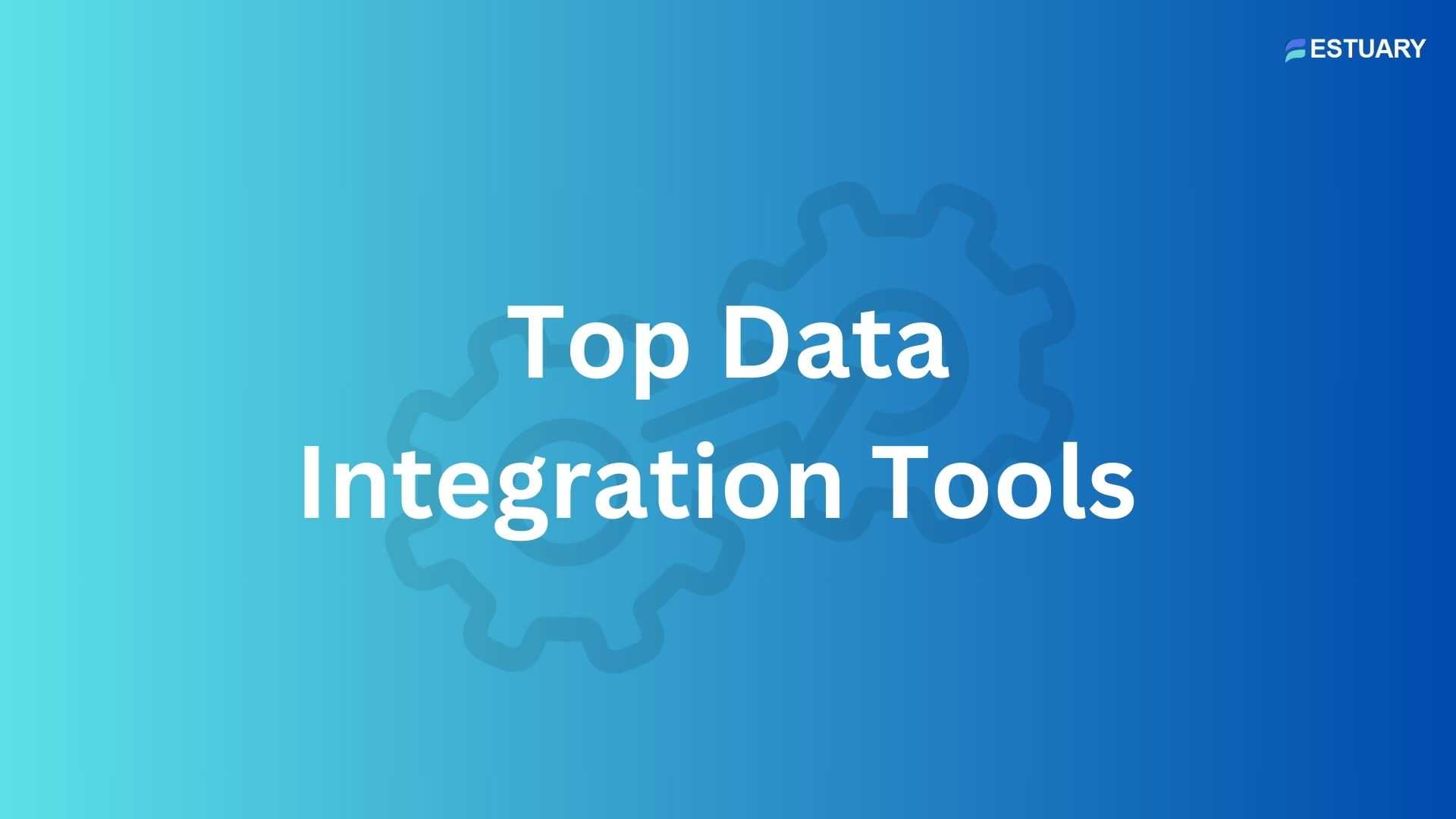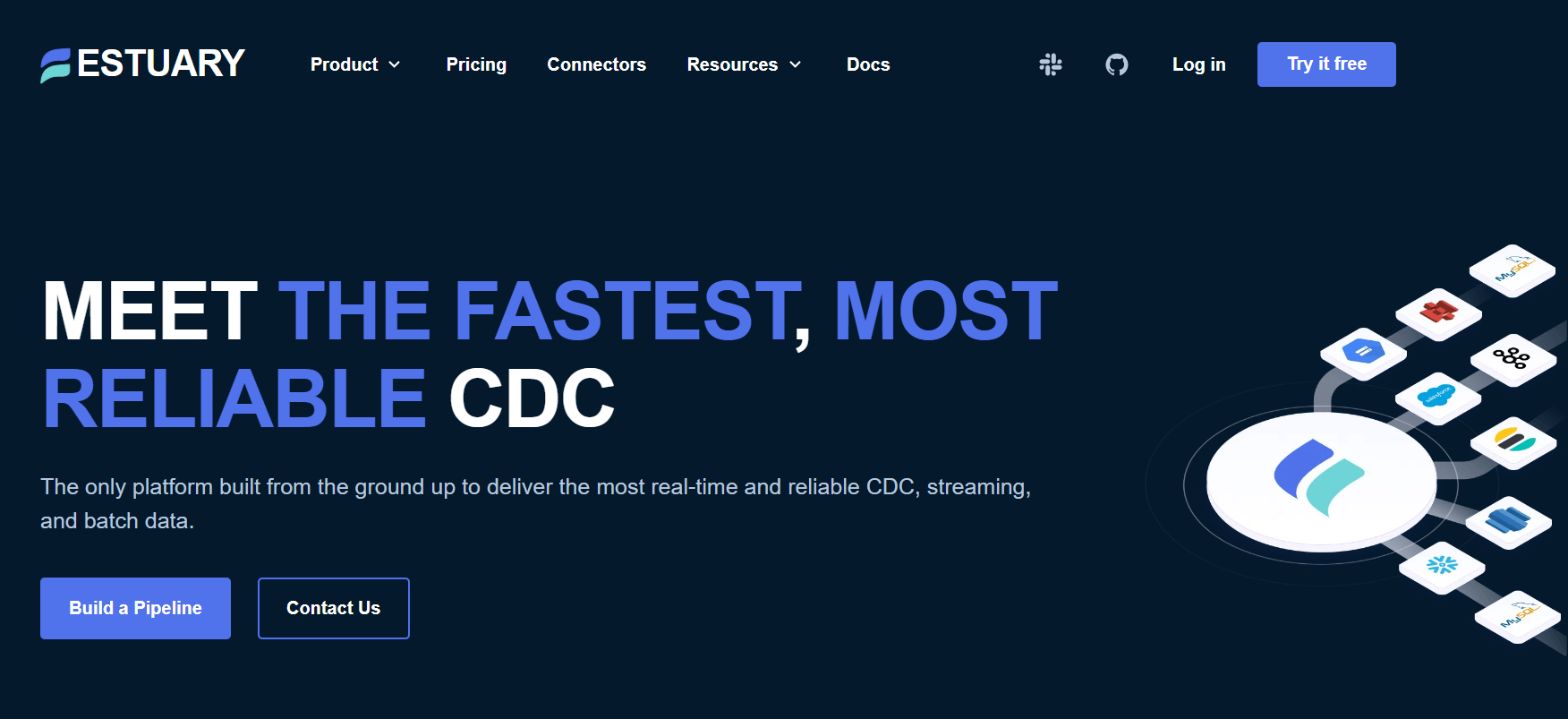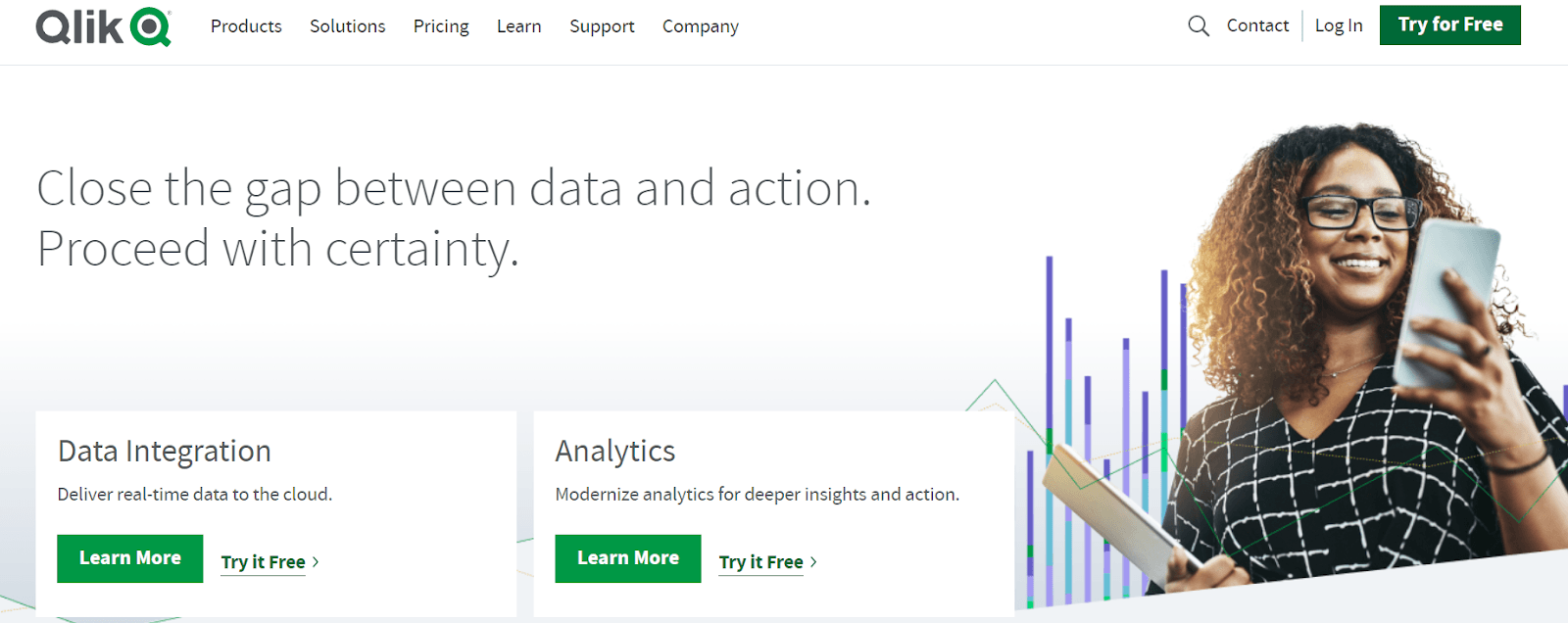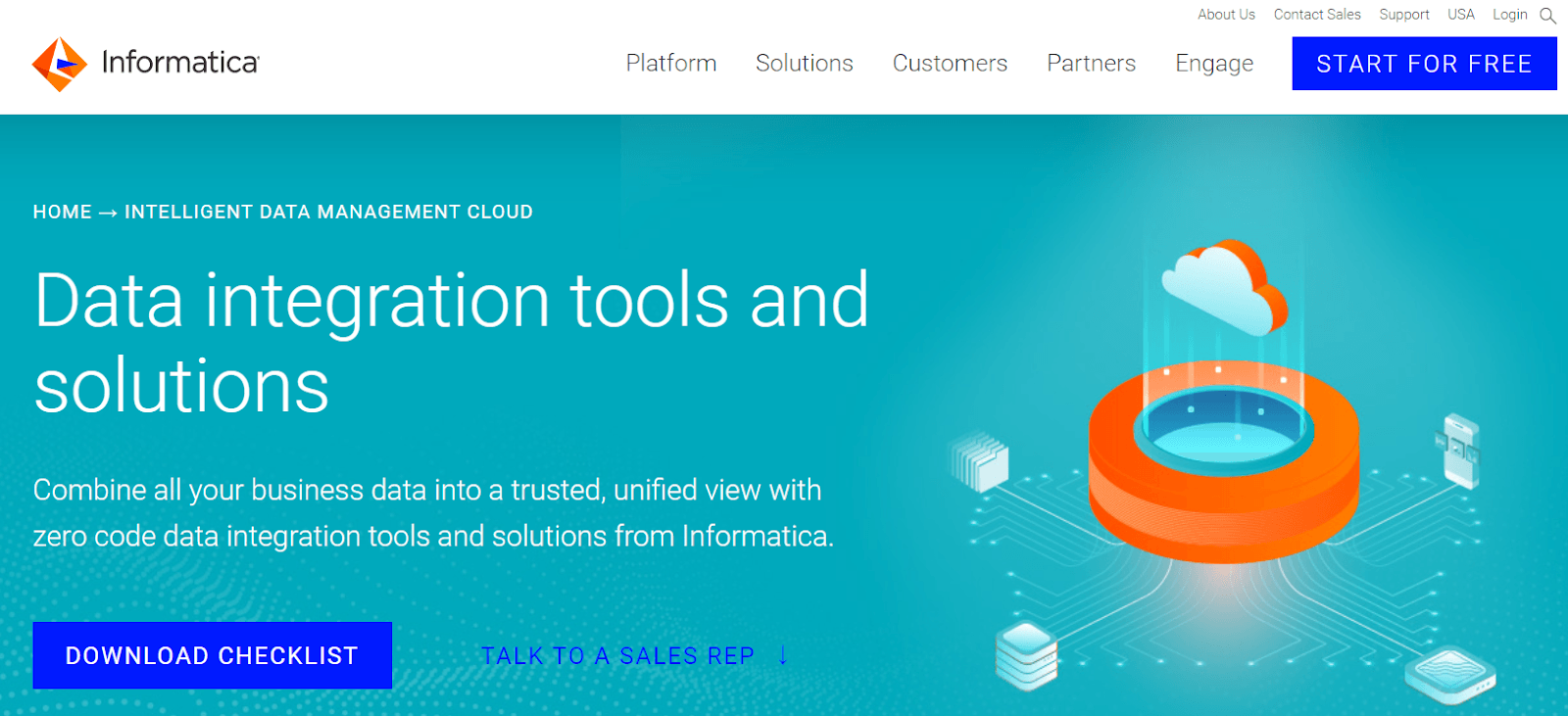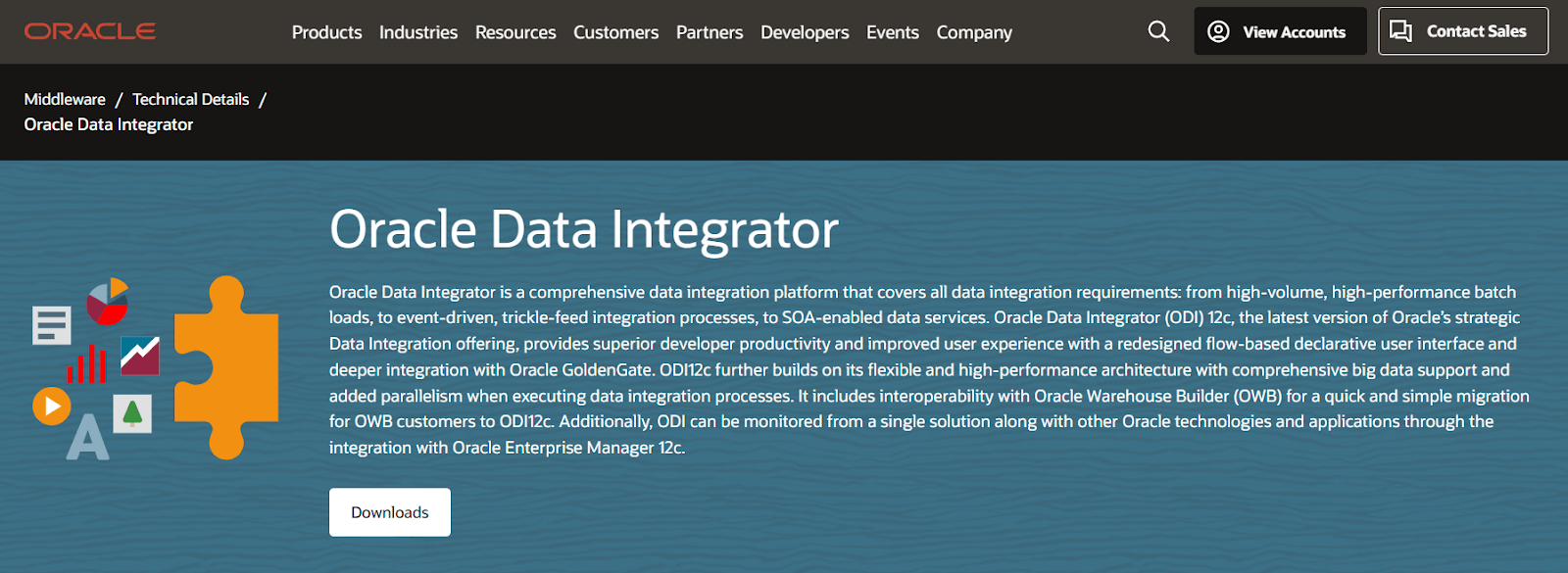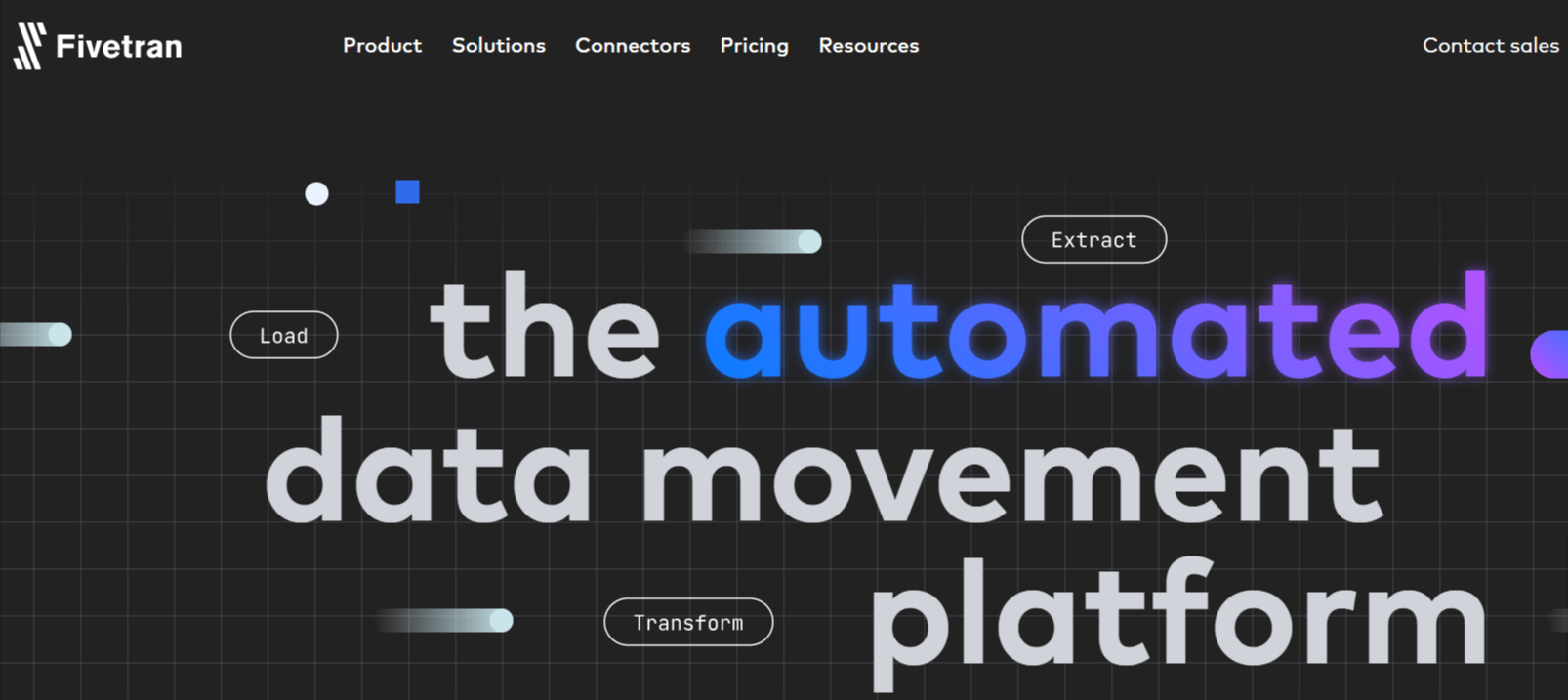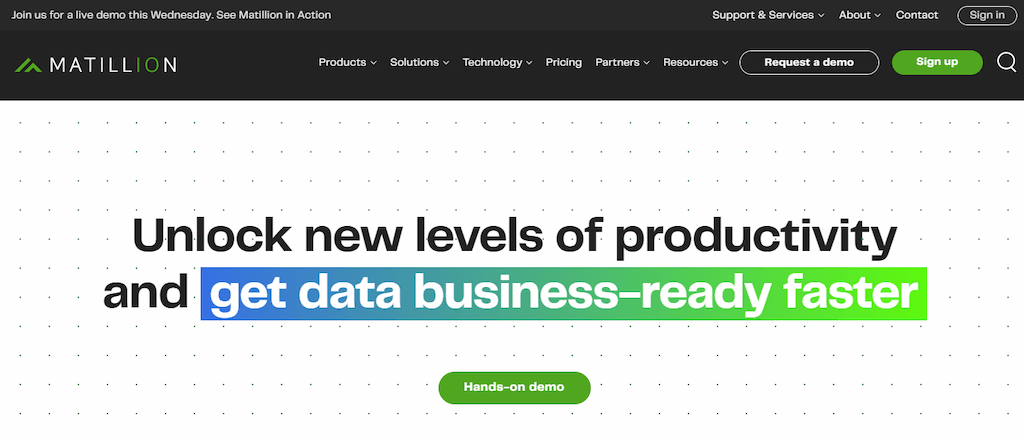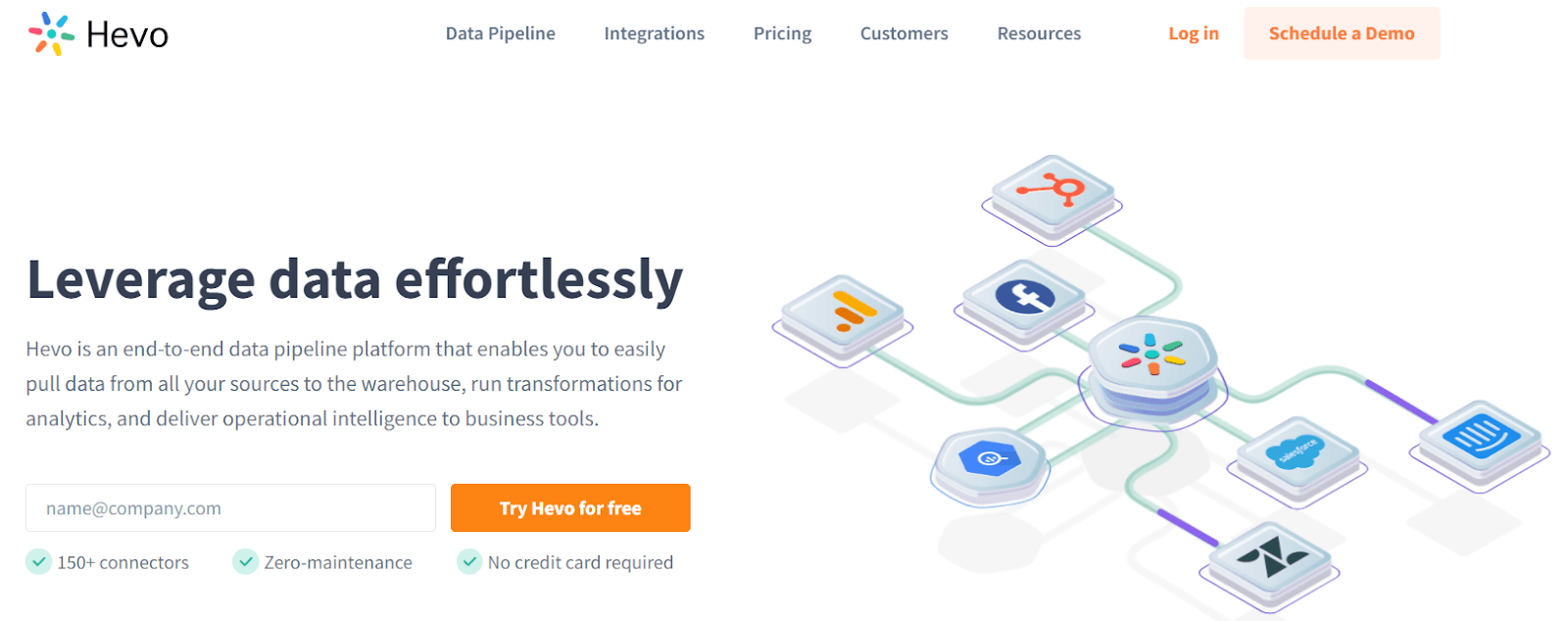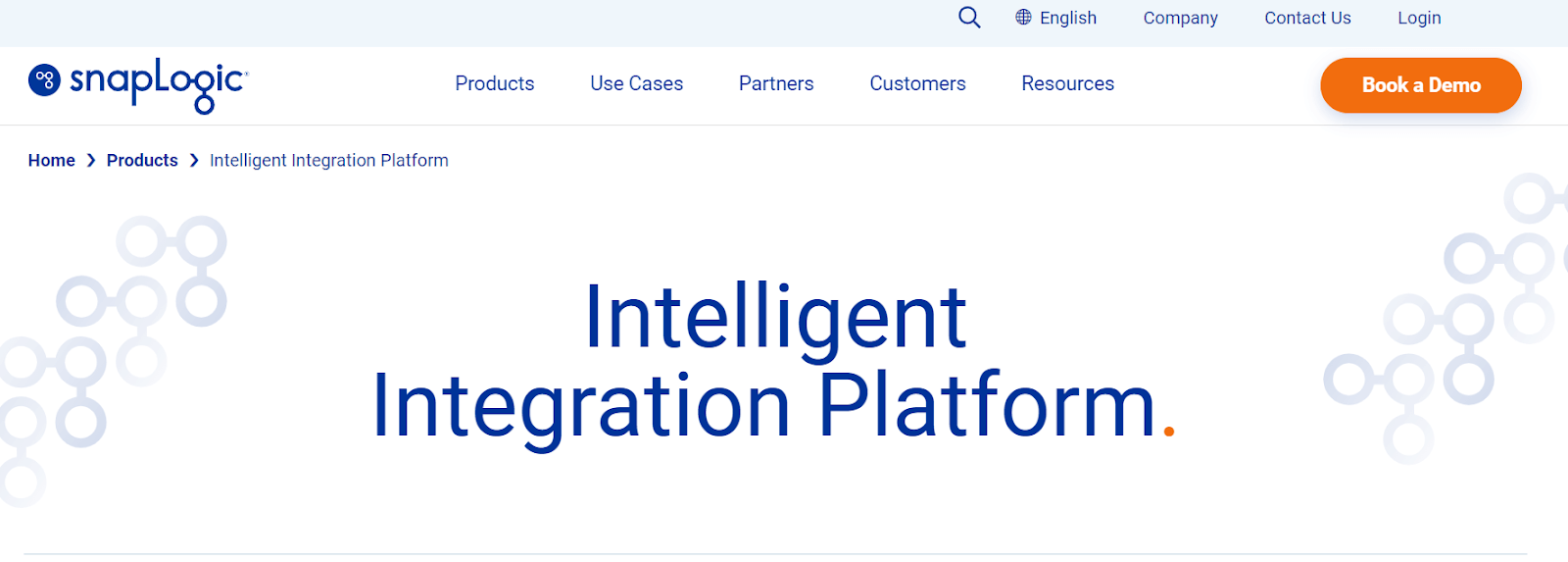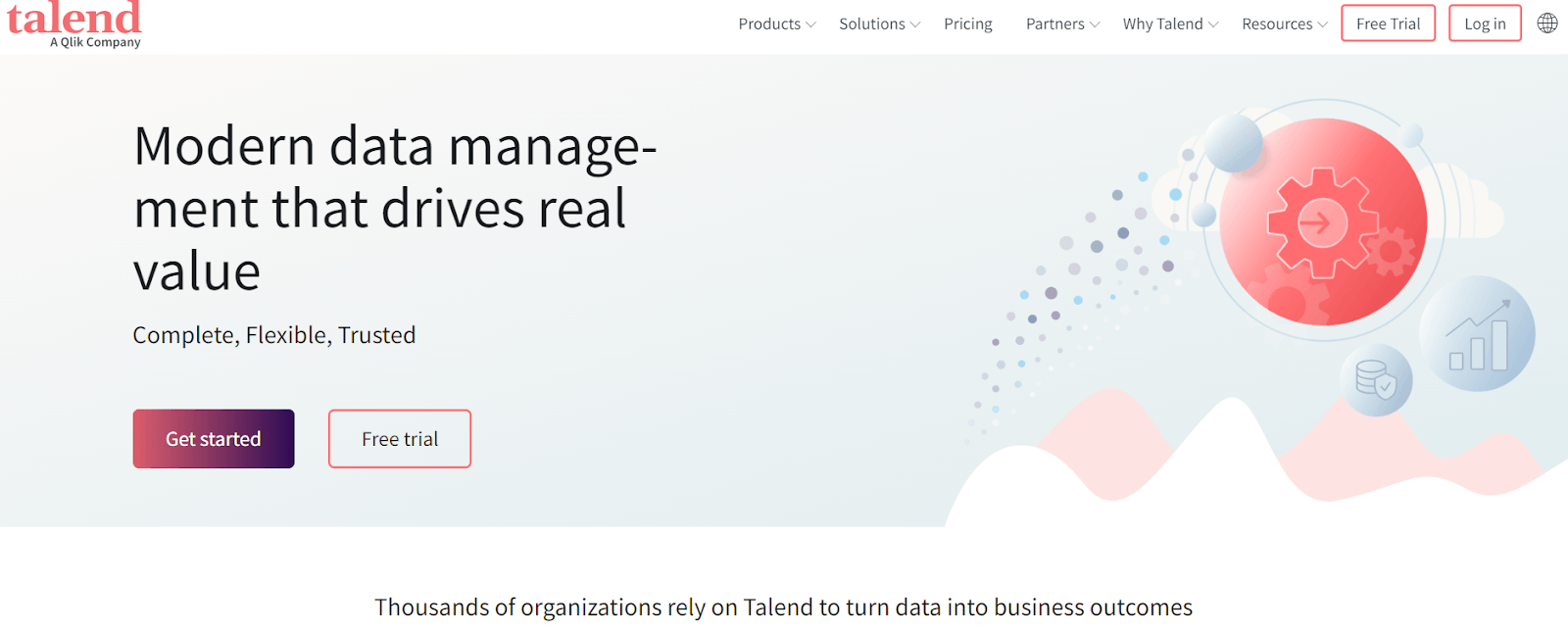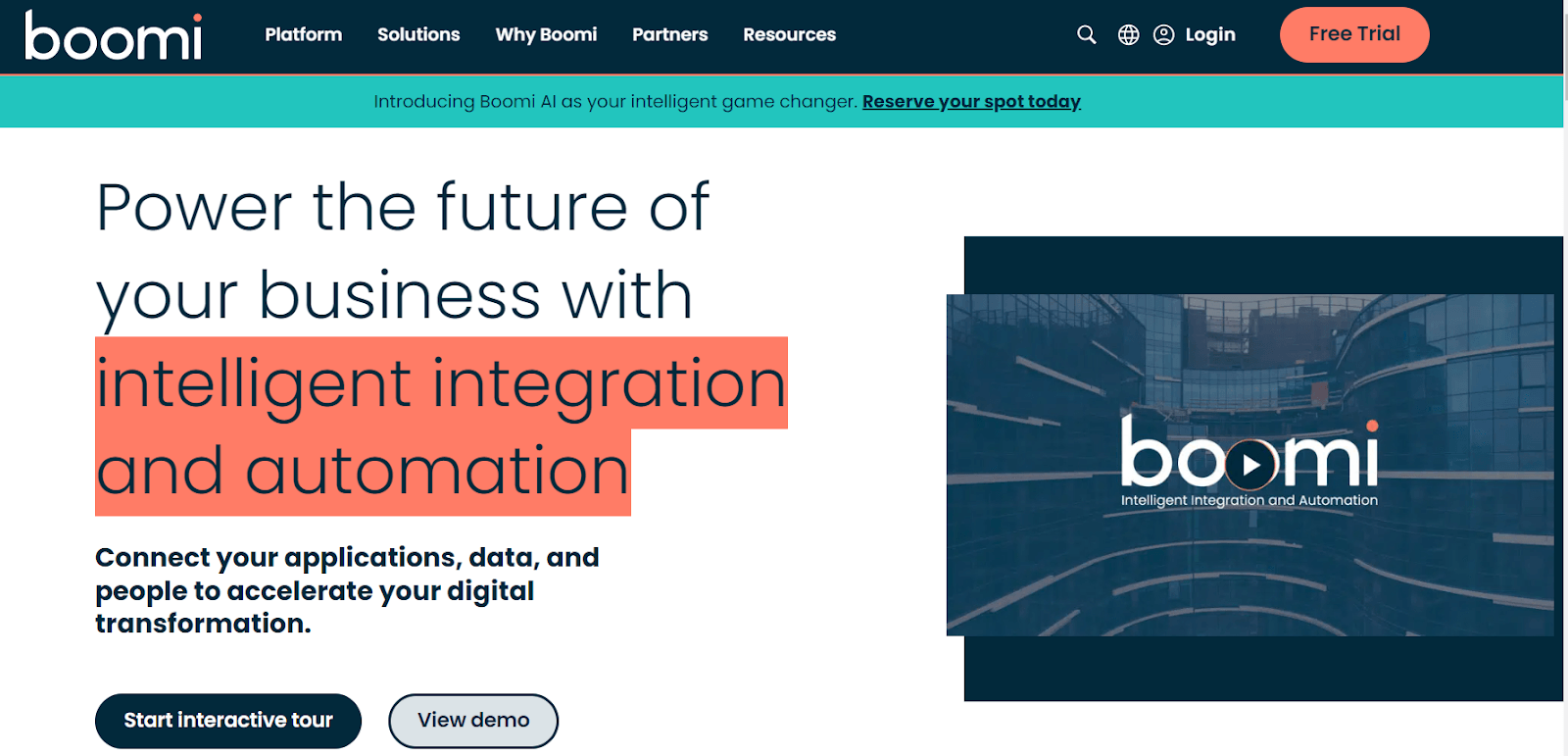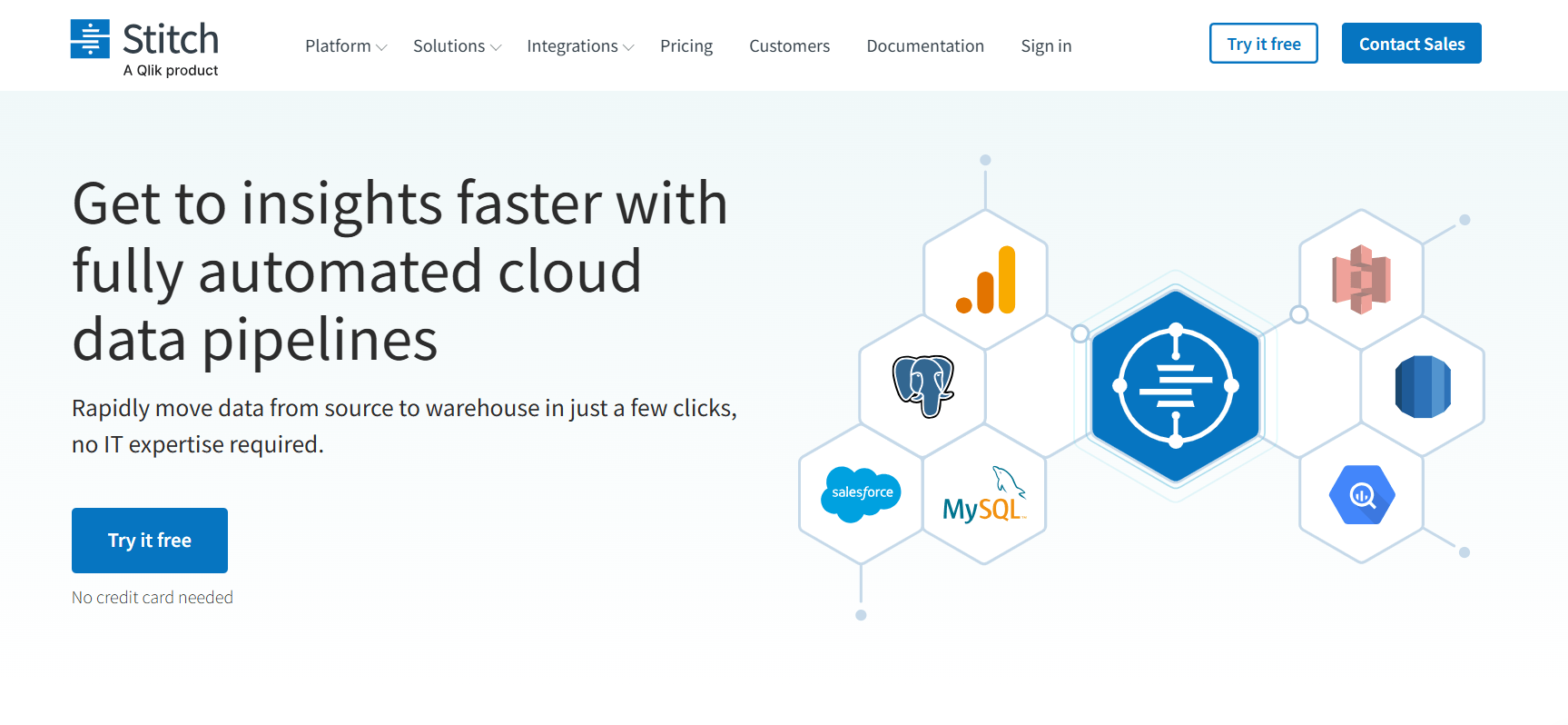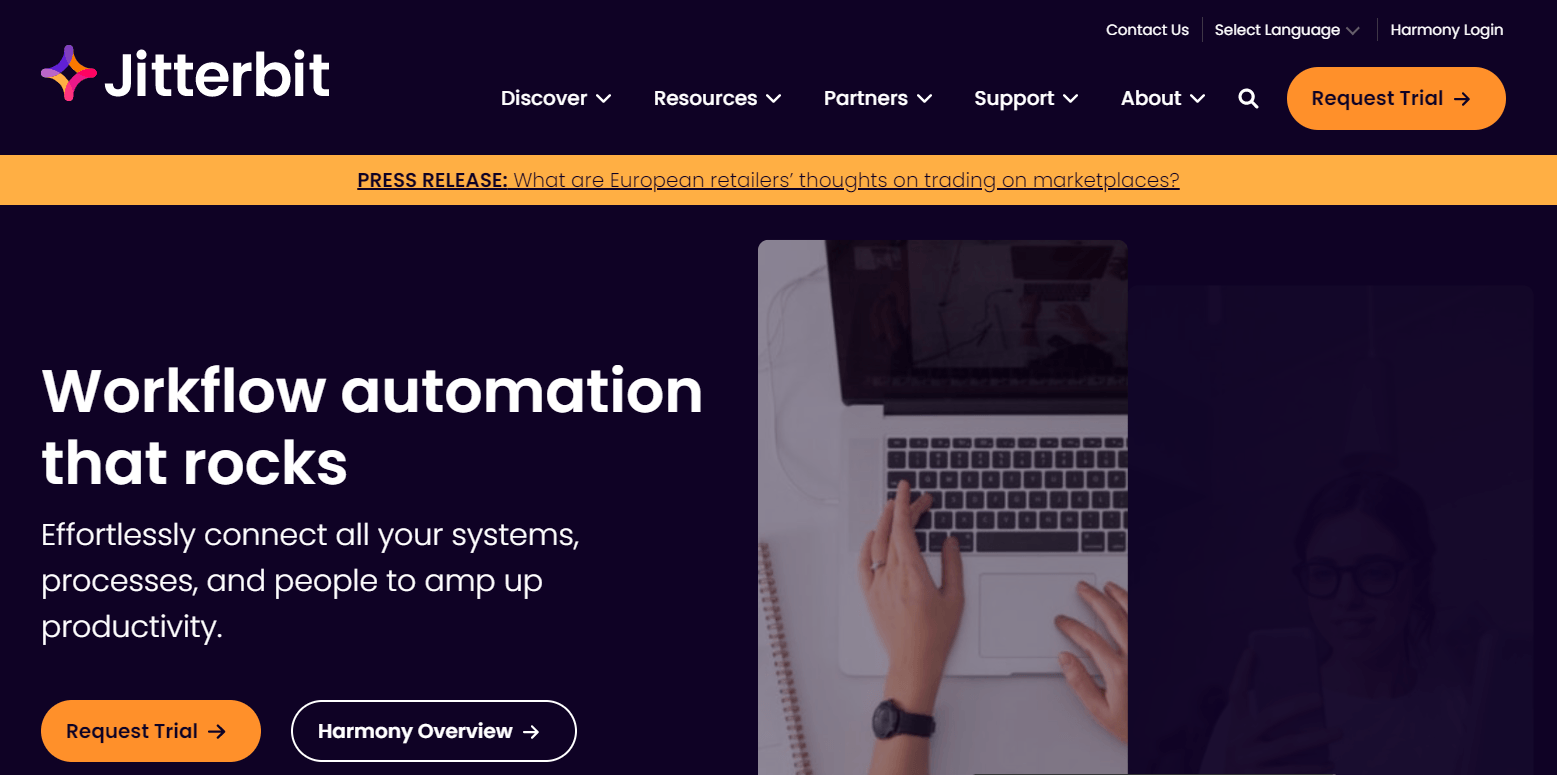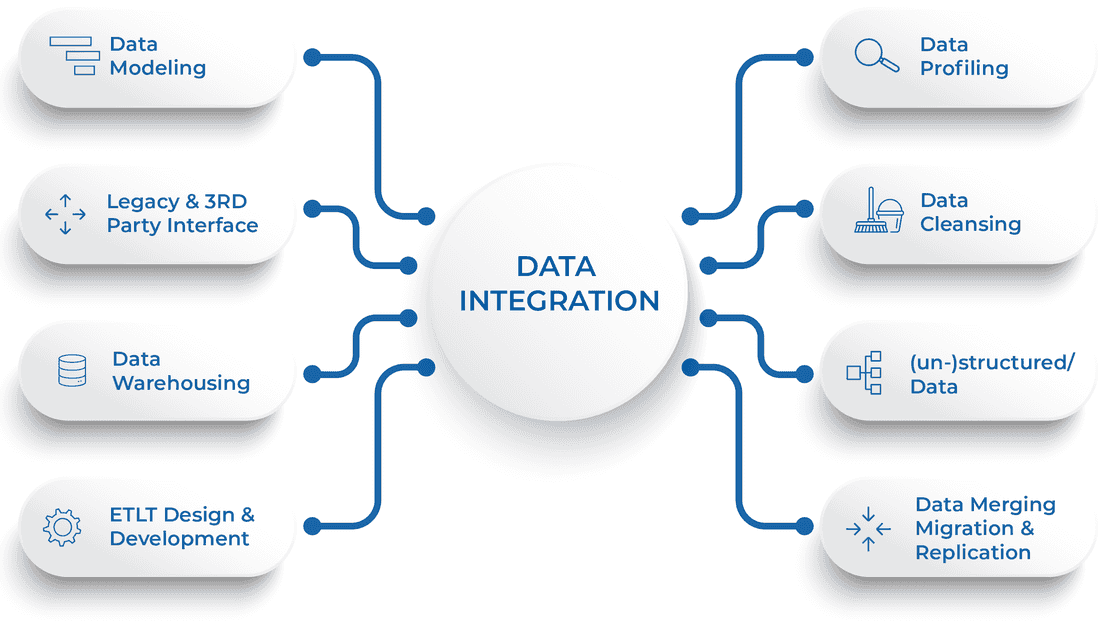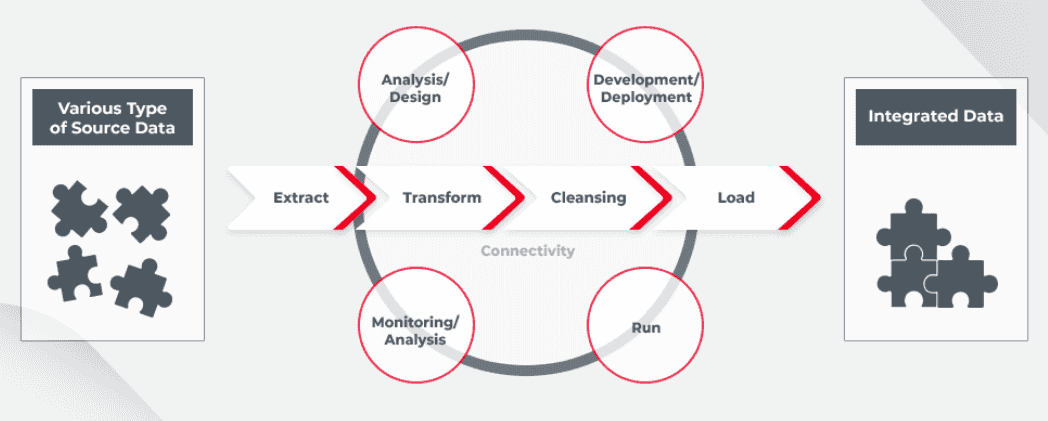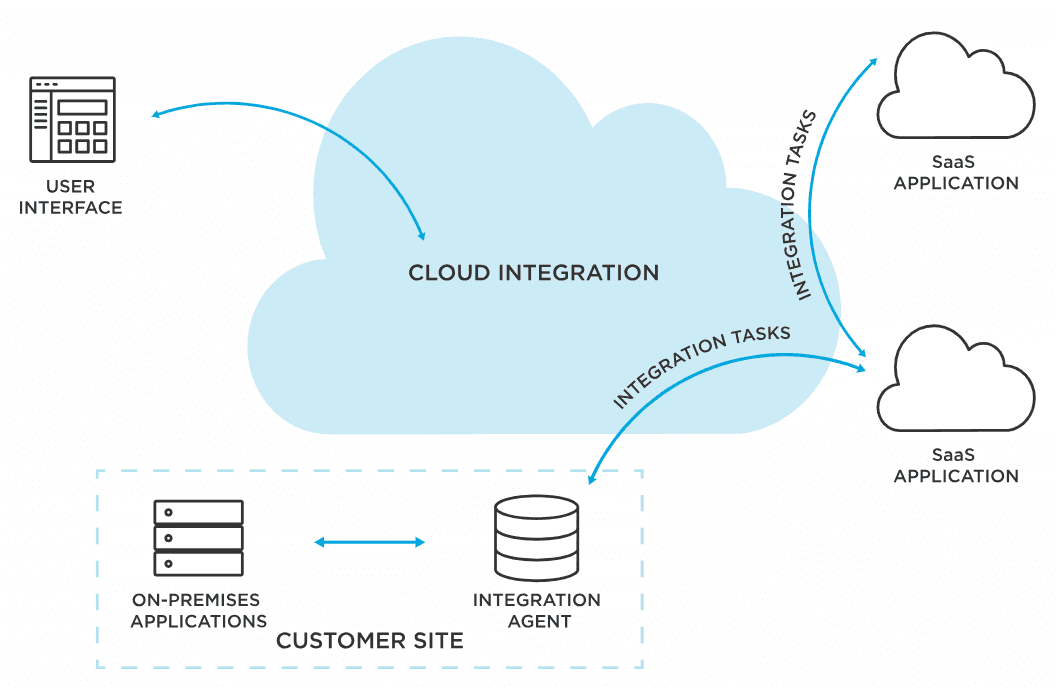
Data is everywhere. But without the right tools, it’s just a messy pile of numbers and text sitting in different systems. How do you turn all that raw data into something useful?
That’s where data integration tools come in. These platforms help businesses move, transform, and sync data across databases, SaaS applications, APIs, and more. Whether you're automating workflows, building real-time analytics, or consolidating business data into a single source of truth, the right integration tool makes all the difference.
But here’s the challenge: There are a lot of options. Do you need an ETL (Extract, Transform, Load) tool? A real-time ELT platform? A Change Data Capture (CDC) solution? Should you go with an open-source tool or a fully managed SaaS platform?
Don’t worry - we’ve got you covered.
We analyzed 17 of the best data integration tools for 2025 to help you find the perfect fit. Whether you need a powerful ETL pipeline, a scalable real-time solution, or a cost-effective data movement tool, this guide breaks down:
- What each tool does best
- Key features, strengths, and weaknesses
- How much each data integration platform costs
By the end, you'll have a clear understanding of the best data integration tools in 2025—so you can choose the one that fits your business like a glove.
Ready to dive in? Let’s go!
What Are Data Integration Tools?
Ever feel like your company’s data is scattered everywhere? Sales data in one tool, marketing data in another, financial reports buried in spreadsheets… and none of it connects?
That’s the problem data integration tools solve. They pull information from different sources, clean it up, and centralize it - so your business gets one clear, accurate version of the truth.
By leveraging data integration tools, organizations can:
- Eliminate Data Silos: Create a single source of truth by unifying data from various sources.
- Enhance Decision-Making: Enable accurate reporting and analytics with consistent, high-quality data.
- Simplify Workflows: Automate data extraction, transformation, and loading processes, reducing manual effort.
- Improve Real-Time Access: Many tools support Change Data Capture (CDC) for real-time updates, ensuring systems stay synchronized.
Benefits of Data Integration Tools
Using data integration tools provides a wide range of benefits that improve data management, decision-making, and operational efficiency. Here are the key advantages:
- Centralized Data Access: Break down data silos by consolidating data from multiple sources into a single, unified repository. This ensures all teams have access to consistent, accurate data.
- Improved Decision-Making: With real-time or near-real-time data integration, organizations can make data-driven decisions based on the most up-to-date information.
- Enhanced Operational Efficiency: Automating ETL and ELT workflows reduces manual intervention, saving time and minimizing errors in data processing.
- Scalability and Flexibility: Modern data integration tools are designed to scale with your organization, handling growing data volumes and supporting diverse integration patterns like CDC, batch processing, and streaming.
- Real-Time Data Synchronization: Tools with CDC capabilities ensure that changes in source systems are immediately reflected in target systems, enabling accurate analytics and responsive applications.
- Improved Data Quality: Many tools include built-in validation and transformation capabilities to clean, normalize, and enrich data, ensuring it meets organizational standards.
- Cost Efficiency: By optimizing data workflows and automating integration tasks, businesses can reduce operational costs associated with data management.
17 Top Data Integration Tools in 2025
Here are the 17 best data integration tools to watch in 2025:
1. Estuary
Estuary is a comprehensive real-time data integration platform that seamlessly handles ETL, ELT, and CDC processes. Designed for flexibility and scalability, it allows businesses to integrate, transform, and sync data across databases, SaaS applications, file stores, and more. With its no-code/low-code interface and advanced security features, Estuary makes real-time data movement and transformation easy for organizations of all sizes.
Key Features
- Real-Time and Batch Integration: Supports low-latency data capture and batch processing, making it suitable for both streaming analytics and cost-effective data loads.
- Broad Connector Support: Comes with 150+ native connectors, with compatibility for 500+ open-source connectors through integrations with Airbyte and Meltano.
- Data Transformation Flexibility: Enables SQL and TypeScript for real-time transformations and dbt for ELT workflows.
- Built-In Data Replay and Time Travel: Automatically stores streamed data for replay and backfilling, ensuring no data loss.
- Secure and Scalable: Provides encryption, authentication, and multi-destination support to scale with your growing data needs.
Pricing
Estuary offers these flexible pricing plans:
- Free Plan: Includes up to 10 GB/month and 2 connector instances at no cost.
- Cloud Plan: $0.50/GB for data moved + $100/connector instance per month (first 6 connectors; $50/connector for additional instances).
- Enterprise Plan: Custom pricing with features like private deployments, enhanced security, and dedicated support.
2. SQL Server Integration Services
SQL Server Integration Services (SSIS) is a robust data integration tool built into Microsoft SQL Server. It is widely used for building high-performance data integration workflows, including data extraction, transformation, and loading (ETL). SSIS supports diverse data sources, making it an ideal solution for organizations leveraging Microsoft’s ecosystem and seeking efficient data warehousing and analytics.
Key Features
- ETL Process Automation: Simplifies data extraction, transformation, and loading tasks with a GUI-based interface.
- Broad Data Source Support: Works seamlessly with SQL Server, Excel, Oracle, IBM DB2, and other databases.
- Error and Event Handling: Provides robust error-handling mechanisms to maintain workflow integrity.
- Workflow Automation: Includes built-in tools for automating administrative tasks, such as FTP operations and data migrations.
- Data Transformations: Offers drag-and-drop functionality for advanced data cleansing and transformation.
Pricing
SSIS is included with SQL Server licenses. Pricing depends on the SQL Server edition
3. Qlik
Qlik provides a powerful data integration platform designed to deliver real-time data synchronization, transformation, and analytics. The tool is highly regarded for its ability to combine data from various sources, enabling users to achieve seamless data integration for cloud and on-premises environments. Its robust architecture supports use cases like data warehousing, analytics, and machine learning.
Key Features
- Real-Time Data Movement: Enables continuous data updates from hundreds of sources to popular cloud platforms like Snowflake and Databricks.
- Point-and-Click Configuration: Simplifies data pipeline setup with a no-code interface.
- Data Transformation and Automation: Provides tools to clean, transform, and automate workflows without scripting.
- Comprehensive Monitoring: Includes tools for tracking data operations and identifying issues.
Cataloging and Lineage Tracking: Helps maintain visibility over your data’s journey from source to destination.
Pricing
Custom pricing plans are available upon request, based on the scale of deployment, data volume, and specific features required.
4. Informatica PowerCenter
Informatica PowerCenter is a comprehensive data integration solution designed to support enterprise-level data transformation and integration needs. With its GUI-based interface and robust ETL capabilities, it efficiently processes data from diverse sources and delivers it to target systems like data warehouses and data lakes. PowerCenter is well-suited for organizations managing complex, high-volume data pipelines.
Key Features
- Scalability and Performance: Handles large-scale data integration tasks seamlessly with advanced pushdown optimization and pipeline partitioning.
- Data Transformation: Offers a wide range of transformation options to clean and standardize data effectively.
- Metadata Management: Maintains a centralized repository for metadata, enabling reusability and streamlined workflows.
- Built-In Debugger: Identifies and resolves issues in data mappings to ensure pipeline reliability.
- Multi-Platform Support: Integrates with diverse data sources, including databases, mainframes, and cloud systems.
Pricing
Pricing starts at approximately $2,000 per month and scales based on deployment size, feature requirements, and enterprise needs.
5. Oracle Data Integrator
Oracle Data Integrator (ODI) is a high-performance data integration platform that supports advanced ETL processes, batch data processing, and real-time integrations. ODI is particularly effective for managing large volumes of data in Oracle ecosystems and other hybrid environments, ensuring data consistency and accuracy across systems.
Key Features
- Declarative Design Approach: Simplifies complex data transformations with an easy-to-use declarative design.
- Comprehensive Connectivity: Offers robust integration with Oracle and non-Oracle databases, cloud services, and applications.
- Fault-Tolerant Architecture: Automatically identifies and recycles faulty data during transformation and loading.
- High-Volume Processing: Handles bulk data operations with exceptional speed and reliability, making it ideal for enterprise use cases.
- Built-in Workflow Automation: Enables event-driven data pipelines and supports trickle-feed integration for real-time updates.
Pricing
Oracle Data Integrator operates on a custom pricing model. Quotes are available upon request, tailored to your organization’s data sources, volumes, and specific use cases.
6. SAP Data Services
SAP Data Services is a robust data integration and management platform designed to streamline data processes for businesses of all sizes. It provides advanced capabilities for extracting, transforming, and loading data from various sources to ensure high-quality and actionable insights. SAP Data Services is particularly well-suited for organizations already leveraging the SAP ecosystem.
Key Features
- Advanced Data Transformations: Perform sophisticated transformations on structured and unstructured data to meet business needs.
- Text Data Processing: Unlock insights from unstructured text data with built-in text analysis tools.
- Comprehensive Connectors: Seamlessly integrate with SAP and non-SAP systems, including social media platforms.
- Enterprise-Grade Scalability: Efficiently handle large-scale data integration projects, ensuring reliability across complex data environments.
- Data Quality Management: Ensure accuracy and consistency with built-in data profiling, cleansing, and validation tools.
Pricing
SAP Data Services operates on a custom pricing model. Pricing details are available upon request, tailored to your organization's specific requirements and data volumes.
7. Airbyte
Airbyte is an open-source data integration platform launched in 2020, designed to create customizable data pipelines. It offers a vast library of connectors, supporting integration from over 300 data sources, with a mix of community-maintained and officially supported connectors. Airbyte is ideal for businesses seeking flexibility and control over their data workflows without committing to vendor lock-in.
Key Features
- Open-Source Flexibility: Fully customizable pipelines with community-driven and self-hosted deployment options.
- Extensive Connector Library: Over 300 connectors for databases, APIs, and SaaS applications, catering to diverse integration needs.
- ELT and dbt Integration: Supports data loading into warehouses and dbt for post-load transformations.
- Incremental Data Loading: Efficiently transfers only new or updated data, reducing processing time and costs.
Pricing
- Open Source: Free but requires self-hosting, which can add infrastructure and management costs.
- Cloud: Starts at $2.50 per credit, but costs can escalate quickly with higher usage, making it less predictable.
- Enterprise: Custom pricing is available, but larger-scale needs may lead to higher costs for full support and features.
8. Fivetran
Fivetran is a cloud-native data integration platform that simplifies the process of extracting, loading, and transforming data. Known for its nearly 300 pre-built connectors and an additional 300+ API connectors, Fivetran automates data pipeline setup, offering a streamlined solution for businesses looking for reliable ELT capabilities. It is particularly well-suited for analytics workflows that require seamless data synchronization.
Key Features
- Extensive Connector Library: Nearly 300 pre-built connectors and additional API-based lite connectors for diverse data sources.
- Automated Schema Updates: Automatically adjusts to source schema changes, ensuring data integrity in the pipeline.
- Batch Change Data Capture (CDC): Captures and replicates data changes in batch intervals for efficient data transfer.
- Integration with dbt: Supports SQL-based transformations directly within the data warehouse using dbt.
Pricing
Fivetran's pricing is based on monthly active rows (MAR), which can be unpredictable due to Fivetran's internal data representation and handling of non-relational sources. Additionally, reducing latency significantly increases costs.
Also Read:
9. Matillion ETL
Matillion is a cloud-native ETL platform designed specifically for modern cloud data warehouses like Snowflake, Amazon Redshift, and Google BigQuery. It provides a user-friendly interface for creating and managing data pipelines, enabling businesses to extract, transform, and load data efficiently. Matillion’s flexible architecture makes it a popular choice for organizations with complex data workflows.
Key Features
- Cloud-Native Design: Fully hosted on the cloud, eliminating the need for on-premise infrastructure.
- Data Transformation: Offers a visual drag-and-drop interface and code editors for advanced transformations.
- Pushdown Optimization: Maximizes performance by pushing transformations directly to the cloud data warehouse.
- Workflow Orchestration: Includes graphical workflow design tools for automating and scheduling pipelines.
- Reverse ETL Support: Enables the transfer of processed data back into operational systems.
Pricing
- Starter Plan: Begins at $1,000/month for 500 virtual core hours, which scales based on usage.
- Custom Plans: Available for enterprises with higher data processing requirements, offering additional features and support.
10. AWS Glue
AWS Glue is a fully managed serverless ETL service provided by Amazon Web Services. It simplifies data preparation and integration for analytics, machine learning, and application development. Built on Apache Spark, AWS Glue automates the process of extracting, cleaning, enriching, and transforming data from various sources.
Key Features
- Serverless Architecture: No need to manage infrastructure, enabling scalability and cost-efficiency.
- Data Catalog: Automatically crawls and catalogs data, making it easily searchable and accessible.
- Pre-built Classifiers: Identifies schemas and suggests transformations, reducing setup time.
- Native AWS Integration: Seamlessly integrates with other AWS services like S3, Redshift, DynamoDB, and Athena.
- Job Authoring: Offers a visual ETL interface as well as support for Python and Scala scripting.
Batch and Streaming Support: Processes data in batch or near real-time for diverse use cases.
Pricing
AWS Glue follows a usage-based pricing model, where costs are determined by the number of Data Processing Units (DPUs) consumed and the duration of your ETL jobs. This flexible approach ensures you pay only for what you use, but it’s essential to monitor job runtimes, particularly for large-scale workloads, to manage expenses effectively.
11. Hevo Data
Hevo Data is a no-code data integration tool that streamlines the creation and management of data pipelines. Its user-friendly interface allows businesses to integrate data from a wide range of sources and destinations effortlessly. Hevo’s automated data workflows ensure data is transformed and delivered reliably, supporting both real-time and batch processing needs.
Key Features
- No-Code Interface: Simplifies data pipeline creation without requiring technical expertise.
- ELT and Reverse ETL Support: Enables flexible data transformation and delivery workflows.
- Real-Time Data Transfer: Ensures timely updates for analytics and decision-making
- Extensive Connectivity: Supports 150+ pre-built connectors for databases, SaaS applications, and more.
- Data Governance: Includes built-in features for data security, compliance, and quality checks.
Pricing
- Free Plan: Offers up to 1 million free events per month, with access to 50+ connectors and unlimited models.
- Starter Plan ($239/month): Includes 150+ connectors, on-demand events, and a 12-hour support SLA.
- Business Plan (Custom Pricing): Provides advanced features like HIPAA compliance, a dedicated data architect, and an account manager, tailored for enterprise-level needs.
12. SnapLogic
SnapLogic is an enterprise-grade, cloud-based integration platform known for its intelligent data integration and automation capabilities. Its browser-based interface features 500+ pre-built, modifiable connectors, called "Snaps," that allow users to build and manage data pipelines effortlessly. With its AI assistant, Iris, SnapLogic simplifies data integration tasks, making it accessible for non-technical users.
Key Features
- Snaps Library: Access to 500+ pre-built connectors for seamless integration across diverse applications, databases, and platforms.
- AI-Powered Assistance: The Iris AI assistant simplifies pipeline creation with recommendations and automation.
- Real-Time Monitoring: Robust tools for monitoring, analyzing, and managing data pipeline performance.
- Low-Code/No-Code Interface: Enables non-technical users to build data pipelines quickly and efficiently.
- Scalability: Supports small-scale operations to large enterprise-level workloads.
Pricing
SnapLogic offers custom pricing based on your organization's needs. Contact SnapLogic for a detailed quote tailored to your integration requirements.
13. Talend
Talend is a versatile data integration platform offering powerful tools for ETL (Extract, Transform, Load) processes and data management. With Talend Data Fabric, organizations can build scalable pipelines to integrate, clean, and govern data across various environments. Talend also provides an open-source version, Talend Open Studio, which is ideal for small-scale projects and teams exploring data integration.
Key Features
- Comprehensive Integration Capabilities: Supports ETL, ELT, and real-time data integration for various data sources, including databases, cloud platforms, and SaaS applications.
- Data Quality Tools: Built-in features for cleansing, standardizing, and validating data to ensure high-quality outputs.
- Over 800+ Connectors: Extensive connector library for seamless integration with diverse systems and applications.
- Visual Pipeline Builder: A user-friendly interface that simplifies the creation and management of data workflows.
- Flexible Deployment: Supports both cloud and on-premises environments, providing options for hybrid use cases.
Pricing
Talend's pricing varies based on deployment and feature requirements. Contact Talend for a custom quote or explore their open-source Talend Open Studio, which is free for basic data integration tasks.
14. Dell Boomi
Dell Boomi is a leading integration platform as a service (iPaaS) that simplifies connecting applications, data, and people across cloud and on-premises environments. Known for its low-code approach, Dell Boomi provides tools for building, deploying, and managing integration workflows with speed and efficiency. It supports businesses of all sizes, making it a versatile choice for streamlining digital transformation.
Key Features
- Low-Code Development: Enables rapid creation of integration workflows with minimal coding, ideal for technical and non-technical users alike.
- Extensive Connector Library: Offers a vast array of pre-built connectors for applications, databases, and cloud platforms, simplifying integration tasks.
- Real-Time Integration: Supports real-time data synchronization and event-driven workflows.
- Hybrid Integration Support: Seamlessly connects on-premises systems with cloud applications, ensuring unified workflows across environments.
- Automation & Monitoring: Provides tools for automating data transformation and real-time monitoring of integration processes.
Pricing
Dell Boomi uses a subscription-based pricing model that varies depending on the number of connectors and features required. Contact Dell Boomi for a custom quote tailored to your organization's needs.
15. Stitch Data
Stitch Data is a cloud-based ELT tool designed to simplify data integration by extracting data from various sources and loading it into your target data warehouse or data lake. Initially developed by RJMetrics and later acquired by Talend, Stitch Data is well-suited for businesses that require a straightforward solution for moving data without complex configurations. It’s particularly popular for analytics-focused use cases.
Key Features
- Pre-Built Connectors: Supports 140+ sources, including databases, SaaS platforms, and APIs, with community-driven Singer taps extending the connector library.
- Automated Schema Handling: Adapts to schema changes seamlessly, reducing manual effort.
- Log-Based CDC: Captures changes in real-time for specific supported sources, ensuring up-to-date target systems.
- User-Friendly Interface: Simplifies pipeline setup with intuitive configurations suitable for non-technical users.
- Multi-Tenant Architecture: Securely handles data integration needs for multiple teams or clients.
Pricing
Stitch Data offers three tiers:
- Standard: $100/month, supports up to 5 million rows/month.
- Advanced: $1,250/month, includes up to 100 million rows/month.
- Premium: $2,500/month, designed for high-volume use cases with 1 billion rows/month and enhanced support options.
16. ZigiOps
ZigiOps is a no-code data integration platform designed to connect and automate workflows across ITSM, monitoring, DevOps, and CRM systems. Its user-friendly interface enables quick and seamless integration between various tools, making it ideal for enterprises looking to synchronize data efficiently. ZigiOps is available both as a PaaS (Platform as a Service) and an on-premises solution, offering flexibility and security for businesses of all sizes.
Key Features
- No-Code Integration: Allows users to set up integrations without requiring coding skills.
- Real-Time Synchronization: Ensures instant data updates across connected systems.
- Extensive Integration Library: Supports over 300 systems across different domains, including ITSM and DevOps.
- Custom Workflows: Enables businesses to define tailored data workflows and automate complex processes.
- Scalability & Security: Designed for enterprise-level scalability with adherence to best security practices, including data encryption.
Pricing
ZigiOps pricing starts at $800 per month. For more advanced integrations and enterprise-level requirements, custom pricing options are available. Contact ZigiOps for a detailed quote based on your business needs.
17. Jitterbit Harmony
Jitterbit Harmony is a low-code data integration tool designed to simplify connecting applications, systems, and data. It enables businesses to create, automate, and manage workflows efficiently, reducing the need for manual intervention. With its pre-built templates and user-friendly interface, Jitterbit supports rapid deployment of integrations tailored to unique business needs.
Key Features
- Low-Code Development: Allows users to build workflows and data pipelines without extensive coding knowledge.
- Pre-Built Templates: Offers templates for common business processes to accelerate integration setup.
- Management Console: Provides a centralized platform to monitor, manage, and control data flows across systems.
- Wide Compatibility: Supports integration with a range of enterprise applications, databases, and cloud platforms.
- Real-Time and Batch Processing: Handles both real-time data transfers and scheduled batch processes effectively.
Pricing
Jitterbit Harmony pricing is customized based on the features and integrations required. Contact Jitterbit for a tailored quote that aligns with your organization's specific needs.
How to Choose the Right Data Integration Tool for Your Business
Selecting the right data integration tool depends on your organization's unique needs, technical expertise, and budget. Here’s a step-by-step guide to help you evaluate and choose the best solution:
- Understand Your Integration Needs
- Determine the type of data you need to integrate: structured, unstructured, or semi-structured.
- Identify the data sources and destinations you need to connect.
- Consider whether you require real-time data synchronization, batch processing, or both.
- Evaluate Features and Capabilities
- Look for tools with comprehensive ETL, ELT, and CDC capabilities.
- Ensure the platform supports your required data connectors.
- Check if the tool provides transformation options like no-code, low-code, or advanced coding.
- Consider Scalability and Performance
- Choose a tool that can handle increasing data volumes as your business grows.
- Verify the platform’s latency and throughput performance, especially for real-time data needs.
- Assess Security and Compliance
- Ensure the tool follows industry-standard security measures like encryption and access control.
- Check compliance with regulations like GDPR, HIPAA, or CCPA, if applicable.
- Budget and Pricing Model
- Compare pricing models (usage-based, subscription, or flat-rate) and align with your budget.
- Look for transparent pricing to avoid unexpected costs, especially for high-volume data integration.
- Ease of Use and Support
- Consider whether your team has the technical expertise required for the tool.
- Choose a platform with an intuitive user interface or robust customer support.
- Trial and Proof of Concept
- Take advantage of free trials or demos to test the tool’s functionality with your data.
- Evaluate the vendor’s documentation and community support for troubleshooting.
Final Thoughts: Finding the Best Data Integration Tool for You
There’s no one-size-fits-all data integration tool. It all depends on your business needs, scalability requirements, and budget.
- Need real-time data streaming?Estuary is your best bet.
- Prefer open-source & developer flexibility?Meltano or Airbyte work well.
- Want a plug-and-play managed solution?Fivetran or Matillion are solid choices.
💡 The best way to decide? Try it out! Sign up for a free trial with Estuary and start building scalable, real-time data pipelines today.
FAQs
- What are the different types of data integration tools?
Data integration tools fall into several categories, including ETL (Extract, Transform, Load), ELT (Extract, Load, Transform), real-time streaming tools, application integration platforms, federated query engines, and data virtualization solutions. Each type serves different business needs and integration scenarios.
- Which is the best data integration tool?
The best data integration tool depends on your needs, but Estuary is a strong choice for its support of most data integration patterns. It offers real-time and batch ETL and ELT data integration, supports various data formats, and provides a user-friendly interface for rapid no-code development.
- What is the difference between Data Integration and Data Ingestion?
Data Ingestion is the process of importing raw data into a system, while Data Integration involves combining, transforming, and loading data from multiple sources for analysis and reporting.
Related blogs

About the author
With over 15 years in data engineering, a seasoned expert in driving growth for early-stage data companies, focusing on strategies that attract customers and users. Extensive writing provides insights to help companies scale efficiently and effectively in an evolving data landscape.





